Enakievo - Overview
Enakievo or Yenakiieve is a city located in the eastern part of Donetsk Oblast of Ukraine, about 60 km from Donetsk.
Since 2014, Enakievo is controlled by the self-proclaimed Donetsk People’s Republic.
The population of Enakievo is about 76,600 (2021), the area - 39 sq. km.
History of Enakievo
The Russian Empire times
Permanent settlements on the territory of present day city were founded in 1783. In 1858, Sofiyevsky coal mine was opened there. At the same time, Petrovsky cast-iron plant was constructed.
In 1895, the engineers F.Ye.Enakiev and B.A.Yalovetsky, and several Belgian businessmen founded a Russian-Belgian metallurgic society which, by 1897, constructed a new Petrovsky cast-iron plant around the settlement Fyodorovka. Coal mines were opened around the plant.
Several settlements were formed near them and, in 1898, they were united into one called Enakievsky after the founder of the Russian-Belgian metallurgic society. The writer A.I.Kuprin who worked at the plant in 1896 described workers’ lives in the story “Molokh”.
Before the First World War, several plants were built in Enakievo: coke chemical, brick, beer brewing and butter making.
Petrovsky plant became the third largest metallurgic plant in the southern Russia. In 1913, it produced 349,200 tons of cast-iron and 316,400 tons of steel.
More historical facts…
Soviet times
After the World War I and the Civil War of 1919-1921, Petrovsky plant was the only one producing steel. By 1925, the population of the town was 34,000.
In 1928, it was renamed into Rykovo, after Soviet party- and statesman A.I.Rykov. After Rykov was arrested in 1937, the town was renamed into Ordzhonikidze after another Soviet party- and statesman G.K.Ordzhonikidze. By 1939, the population was 88,200. The name Enakievo was returned in 1943.
During the Second World War, it was under siege from Italian army auxiliary units that were seconded to the German Army. They were followed by German units.
The city was attacked October 31, 1941, and was not freed until September 3, 1943. Street fighting was fierce between the end of November and the beginning of December 1941. “Recruitment” of civilians (ostarbeiter = east workers) began in December 1941.
In 1950, Italian prisoners of war were put to trial, over atrocities in Enakievo (including the destruction of a hospital). Apparently, no convictions were registered, and, by 1954, all Italian POWs were returned to Italy.
In 1950s, several plants were put into operation: of ferro-concrete items, of construction material, of house building, automobile-repairing.
On September 16, 1979, on the territory of the city, in the “Yuny Communar” mine, there was a nuclear explosion - “Klivazh” object.
In 2002, the mine was closed as non-perspective and environmentalists worry about the danger of filling the mine with water. It might cause radioactive pollution of underground water. That’s why pumps continue to pump the water out of abandoned mine.
Enakievo views
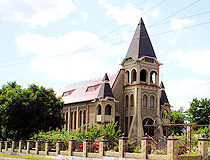
Enakievo church
Author: Lazarovich
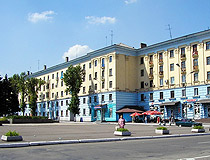
Enakievo street
Author: Lazarovich
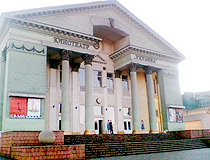
Enakievo movie theater
Author: Lazarovich
Attractions of Enakievo
Local History Museum. The museum was opened in 1977. The collection has about 15,000 exhibits presented in four halls. The museum has a unique collection donated by the archaeologist V. Klimenko: Palaeolithic age blades, tools of Catacomb and Babkinskaya cultures. There are exhibits of the Scythian and Sarmatian periods.
Also, there is an exhibition dedicated to the fourth President of Ukraine Viktor Yanukovich. The collection of items associated with the cosmonaut G. Beregovoy is very interesting too. Shcherbakov Street, 122.
The Cathedral of the Holy Virgin. The cathedral was founded on the site of the destroyed church in 1999. In 1966, the city authorities decided to demolish the church of the Holy Protection built in the 19th century. In 2007, the church, built on the highest point of the city, received the status of the cathedral. Metallurgov Street, 21.
The Monument to Enakiev. The monument to F. Enakiev, the founder of the city, was opened during the City Day celebrations on Lenin Sqaure in 2010. It is installed directly in front of the statue of Lenin. The monument is made by honored artist of Ukraine P. Antip, who is also known as the author of the monument to the founder of the neighboring Gorlovka.
The winter garden of the state enterprise “Ordzhonikidzeugol”. The place chosen for the garden was unusual, but very good - the “well” formed by the walls of the administrative building of “Ordzhonikidzeugol”.
Today, in an area of 625 square meters, there are about fifty species of plants - different palm trees, vines, cacti, arborvitae, ferns, bamboo, hibiscus, ivy. Fish and two turtles are living in the pond.
The winter garden became the landmark of the city. Children come here during school tours, people like to take pictures on the background of lush vegetation of the garden. Visitors throw coins into the pond making wishes and hoping for good luck. Trestovskaya Street, 10.
Ilika village. The main attraction of this village, located near Enakievo, is an architectural monument of the 17th-19th centuries - the church of St. Vladimir Mother of God. The building is unique because in present Ukraine there is no other church constructed on the same project.
Near the church, Skelevaya gully is located. It is one of the most beautiful places in Ukraine having the status of a wildlife preserve. Also, the place is known for Tishkina Krynica (spring) with the best water in the city.


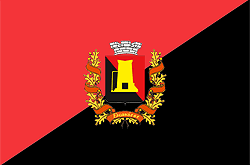
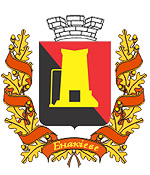



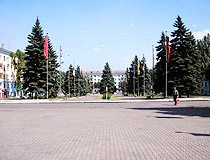
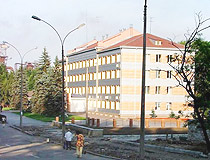
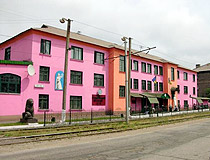
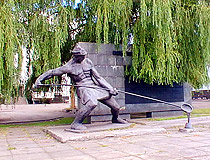

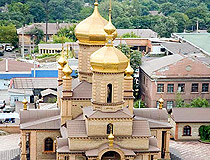
The comments of our visitors